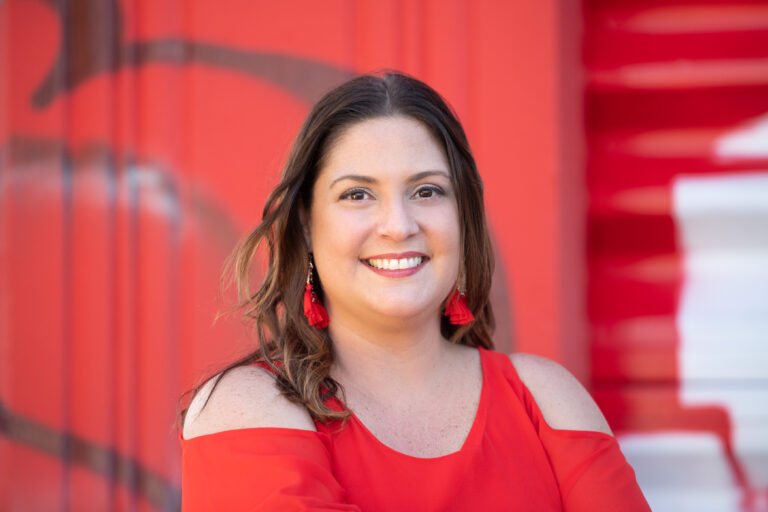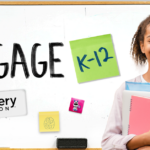Alexandra Alessandri is the award-winning author of Feliz New Year, Ava Gabriela! (Albert Whitman & Company) and Isabel and Her Colores go to School (Sleeping Bear Press). The daughter of Colombian immigrants, she is also a former associate professor of English, a writer for Curriculum Associates, and a poet.
We recently had the honor of chatting with Alexandra about diversity, equity, and inclusion in both literature and teaching. Here’s what she said:
What inspired you to become an author?
I’ve always been a storyteller and writer, but it wasn’t until I became a mom that I fell in love with writing for children and felt inspired to become a children’s author. I would read aloud to my son and witness how captivated he became with the stories we read, and I’d compare that to the ambivalence many of my college students had toward reading. It struck me then that I wanted to do my part in making lifelong readers.
What are some central themes covered in your writing? Why are these topics beneficial to students?
I write often about identity, family, and my Colombian culture. In particular, I love exploring the nuances of being Colombian and/or Latinx in the U.S. This exploration of identity, culture, and family—and the emotions these intersections might elicit—are important to me, and I would argue they’re important to many students.
According to the U.S. Department of Health and Human Services Office of Minority Health and based on the 2019 U.S. Census Bureau population estimates, “there are 60.5 million Hispanics living in the United States [and] this group represents 18.4 percent of the U.S. total population.” Furthermore, as of 2019, 26% of children under 18 in the U.S. are of Hispanic or Latino origin. While Latinx people are not a monolith, and our experiences and cultures are as diverse as our countries of origin, there’s an underlining connection between us. In writing stories with these themes, I’m offering a mirror to Latinx students across the U.S., showing them their stories matter—and this is incredibly empowering for students.
I’m also providing a window for non-Latinx children. As Dr. Rudine Sims Bishop writes in her essay, “Mirrors, Windows, and Sliding Glass Doors”: “When there are enough books available that act as both mirrors and windows for all our children, they will see that we can celebrate both our differences and our similarities, because together they are what makes us all human.”
In writing about identity, family, and culture, I’m hoping children can witness the beauty of our shared humanity.
What is ‘own voices’ and how does this make reading passages more relatable for students?
The term #ownvoices was created as a Twitter hashtag in 2015 by young adult author Corinne Duyvis as way of focusing on diverse authors and not just diverse books. #Ownvoices says that an author who is part of an underrepresented group and their protagonist share the same identity and that the author is writing from their unique, lived experience.
While there is some ongoing criticism about the way #ownvoices is being used “as a “catch all” marketing term by the publishing industry” (WeNeedDiverseBooks), the idea behind the concept, that an author is writing from their lived experience and in doing so, is sharing the authentic nuances of that experience, is important for students. There’s something special about seeing people like you, your family, and community in stories and passages. For those students who share similarities to that identity, it allows them to recognize themselves in the passages they’re reading, empowering them and affirming their reality. For those who are reading outside of their own experiences and identities, they gain a window into another life and it’s an exercise in fostering empathy, acceptance, and kindness.
Why is it so important for educators to teach about diversity, equity, and inclusion? What should educators look for when choosing books or reading passages to teach about these topics?
Diversity celebrates the uniqueness each student brings to the classroom. Equity ensures that each student is treated fairly and without bias, and that all students’ needs are met. Inclusion asks us to embrace our students’ differences, to welcome them to the table and not push anyone away.
When we teach about—and for—diversity, equity, and inclusion, we send a message to our students that they matter, that all of them matter. We teach them to value and embrace each other’s differences, as well as to show empathy, compassion, and kindness.
When choosing books or reading passages to teach about these topics, it’s important that our choices reflect a full range of experiences and that we offer students many stories. For example, Latinx people are more than their immigration status, and as such, our stories should reflect this. Of course these immigration stories are critical for students, especially in recent years, but we also need the magic, the joy, the everyday situations that students face in school and at home. Similarly, there are thirty-three countries in Latin America and the Caribbean, so simply having one book or passage representing one of these thirty-three countries of origin would not even touch the vast richness of the Latinx experience.
These are just some examples from a Latinx perspective, but this can be applied to stories about other cultures, religions, gender identities, etc. As Chimamanda Ngozi Adichie says in her TED Talk “The Danger of a Single Story,” “Stories matter. Many stories matter. Stories have been used to dispossess and to malign. But stories can also be used to empower, and to humanize. Stories can break the dignity of a people. But stories can also repair that broken dignity.”
What are other strategies or resources educators could use to teach about diversity, equity, and inclusion?
Resilient Educator is an online source full of helpful articles, activities, and more, including the article “Cultivating Diversity, Equity, and Inclusion in Education Environments.” University websites have great resources, too, like University of Delaware’s Center for Teaching & Assessment of Learning, which has a page on Diversity and Inclusive Teaching with a list of handouts, websites, and books.
But, aside from resources, things like honestly reflecting on our own biases as educators and taking steps to rectify them; honoring and respecting students’ cultures; making an effort to pronounce students’ names correctly; acknowledging and using their preferred names, nicknames and/or pronouns; and truly listening to students can teach them about diversity, equity, and inclusion in a way that simply talking about it can’t. One of the best ways to teach is by example, so when we teach students about diversity, equity, and inclusion, we should be showing them what this looks like through our actions.
The American Consortium for Equity in Education, publisher of the "Equity & Access" journal, celebrates and connects the educators, associations, community partners and industry leaders who are working to solve problems and create a more equitable environment for historically underserved pre K-12 students throughout the United States.
- American Consortium for Equity in Educationhttps://ace-ed.org/author/admin/
- American Consortium for Equity in Educationhttps://ace-ed.org/author/admin/April 23, 2025
- American Consortium for Equity in Educationhttps://ace-ed.org/author/admin/
- American Consortium for Equity in Educationhttps://ace-ed.org/author/admin/







